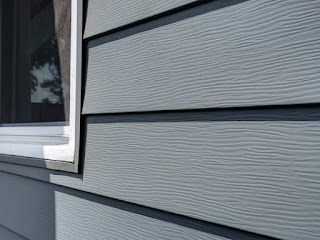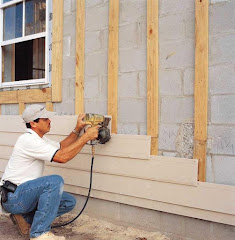Search This Blog
Most Popular
Categories
- Building Construction (82)
- Building Materials (82)
- Columns (2)
- Concrete Beam (3)
- Concrete Construction Techniques (4)
- Concrete Mix Design (10)
- Concrete Repair (14)
- Concrete Slab (10)
- Construction Equipment (16)
- Construction News (7)
- Design of Structures (15)
- Engineering Drawing (1)
- Estimation (3)
- Geotechnical engineering (26)
- Highway Engineering (11)
- Innovations (30)
- Material Testing (9)
- Matrix Analysis of Structures (2)
- Mechanical Engineering (3)
- Strength of Materials (2)
- Structural Analysis (17)
- Structural Design (21)
- Structures (17)
- Transportation Engineering (9)
What is Siding in Construction?
- What is the need for siding the house?
- What are the types of siding?
- What is the cost of siding?
What is the Need for Siding for Homes?
- All buildings do not require siding. For example, buildings made of masonry walls. But buildings that are constructed using internal frames of wood or steel do require siding.
- Siding a building not only protects the building from exterior environmental and weather factors but also helps to create a stable and comfortable environment on the interior.
- Siding helps enhance the building's aesthetics and thereby increases the selling value of the building.
- Most siding materials are made from weather-resistant material that facilitates the expansion and contraction of material during moisture or temperature variations.
- Siding installation is performed either using joints or without joints. Siding without joints might result in future cracks due to the provision of joints for movements and can even result in water damage.
What are the Types of Siding Materials for Buildings?
1. Thatch Siding
- Employs thatch to side the roof and walls. Thatch is made from dry vegetation like long straw, water reeds, or combined wheat reeds.
- They are installed by laying each layer of thatch one over the other and weaved to bring unique patterns.
|
Thatch
Siding |
Advantages |
Disadvantages |
|
|
Rustic
design feature for the building. Cheap
and traditional. Sustainable
Material A
Design idea that preserves biodiversity Positive
impact on the surroundings
|
Slowly
Inflammable Not suitable
for all building sites.
|
2. Aluminum Siding
- Cheap aluminum siding - 40 gauge
- Standard aluminum siding-44 gauge
- Higher standard aluminum siding - 53 gauge
 |
| Aluminum Siding |
|
Aluminum
Siding |
Advantages |
Disadvantages |
|
|
Provide excellent insulating properties Reduce heating and cooling costs. It is light and easy to install. Best choice for coastal areas as these sidings resist moisture and prevent rot or the growth of mildew. Aluminum siding is rust-free, water and moisture-proof, and fire and insect-proof. Aluminum is recyclable and a choice for builders looking for green construction. |
Aluminum siding dents easily and demands replacement of the complete panel. Aluminum siding panels lose color and become dull with time. It is easily susceptible to scratches. High-intensity winds or rain storms can cause aluminum to cause pinging noises. |
3. Vinyl Siding
 |
| Vinyl Siding |
|
Vinyl
Siding |
Advantages |
Disadvantages |
|
|
Comes in a range of styles, colors, and textures. Least expensive and affordable. Very durable with a warranty of 50 years Repainting is not required Quick and professional installation |
Undergo cracks in cold temperatures. Damage requires the replacement of complete panels or planks. Difficult in finding repair materials as product lines are frequently discontinued. Susceptible to fire and heat damage. |
4. Fiber Cement Siding
|
Fiber Cement Siding |
Advantages |
Disadvantages |
|
|
Long lasting-50 years Moisture and insect resistant Unaffected by heat and flame |
Expensive Difficult to install as it is heavy Requires repainting as the appearance demands, |
5. Wood Siding
|
Wood Siding |
Advantages |
Disadvantages |
|
|
Accepts different stains or paint finishes. Provide a luxurious authentic look. Can be repainted. Basic carpentry skills are only required for installation. |
High cost High maintenance. Prone to moisture damage. Highly inflammable and a poor choice for wildfire-prone areas. |
What is the Cost of Siding?
|
Siding Material |
Cost |
|
Aluminum Siding |
$3 to $6 per square foot |
|
Wood siding |
$1 to $10 |
|
Vinyl Siding |
$ 3 to $8 per square foot |
|
Fiber cement siding |
$10 per square foot |
For budge-conscious homeowners metal to vinyl siding products are available as they are more durable. Metal is selected over vinyl if the region is prone to the danger of wildfire. Fiber cement and natural wood are very good choices if one can afford them. Obviously, each homeowner must do his or her own due diligence when it comes to siding a home.










0 Comments
Commenting Spam Links Are Against Policies